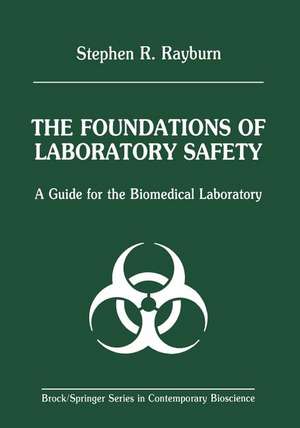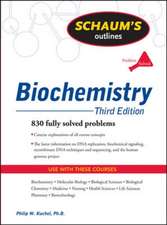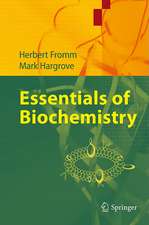The Foundations of Laboratory Safety: A Guide for the Biomedical Laboratory: Brock Springer Series in Contemporary Bioscience
Autor Stephen R. Rayburnen Limba Engleză Paperback – 17 sep 2011
Preț: 792.81 lei
Preț vechi: 966.85 lei
-18% Nou
Puncte Express: 1189
Preț estimativ în valută:
151.71€ • 158.79$ • 126.27£
151.71€ • 158.79$ • 126.27£
Carte tipărită la comandă
Livrare economică 01-15 aprilie
Preluare comenzi: 021 569.72.76
Specificații
ISBN-13: 9781461279655
ISBN-10: 1461279658
Pagini: 436
Ilustrații: XIII, 418 p.
Dimensiuni: 178 x 254 x 23 mm
Greutate: 0.75 kg
Ediția:Softcover reprint of the original 1st ed. 1990
Editura: Springer
Colecția Springer
Seria Brock Springer Series in Contemporary Bioscience
Locul publicării:New York, NY, United States
ISBN-10: 1461279658
Pagini: 436
Ilustrații: XIII, 418 p.
Dimensiuni: 178 x 254 x 23 mm
Greutate: 0.75 kg
Ediția:Softcover reprint of the original 1st ed. 1990
Editura: Springer
Colecția Springer
Seria Brock Springer Series in Contemporary Bioscience
Locul publicării:New York, NY, United States
Public țintă
ResearchCuprins
1 Basic Principles of Laboratory Safety.- 1 Safe Laboratory Techniques.- 2 Protective Clothing and Personal Equipment.- 3 Safe Personal Habits and Practices.- 4 Housekeeping Procedures.- 5 Principles of Decontamination and Sterilization.- 2 Laboratory Facilities, Operations, and Practices 67.- 6 Specialized Equipment Facilities.- 7 Waste Disposal in the Research Laboratory.- 8 Glassware Washing Operations.- 9 Design and Use of Biological Safety Cabinets.- 10 Facility Design and Physical Containment.- 3 Biomedical Laboratory Safety.- 11 Hazards of Biological Agents.- 12 Chemical Hazards.- 13 Hazards of Radioisotopes.- 4 Control of Common Hazards.- 14 Physical and Mechanical Hazards.- 15 Electrical Hazards.- 16. Fire Hazards.- 17. Handling Compressed Gases.- 5 The Components of the Effective Safety Program.- 18. Safety Regulations and Standards.- 19. Personnel Orientation and Training.- 20. Role of Medical and Health Factors.- 21. Accident Reduction and Emergency Planning.- 22. Designing a Safety Program.- Appendix 1: Cleaning Up Spills of Hazardous Agents.- Appendix 2: Hazard Characteristics of Common Toxic Chemicals.- Appendix 3: Hazard Warning Signs and Labels.- Appendix 4: Packaging and Shipping Hazardous Materials.- Appendix 5: Resources for Help and Information.- Appendix 6: Syllabus for a Safety Course.- References.- Additional Readings.






















